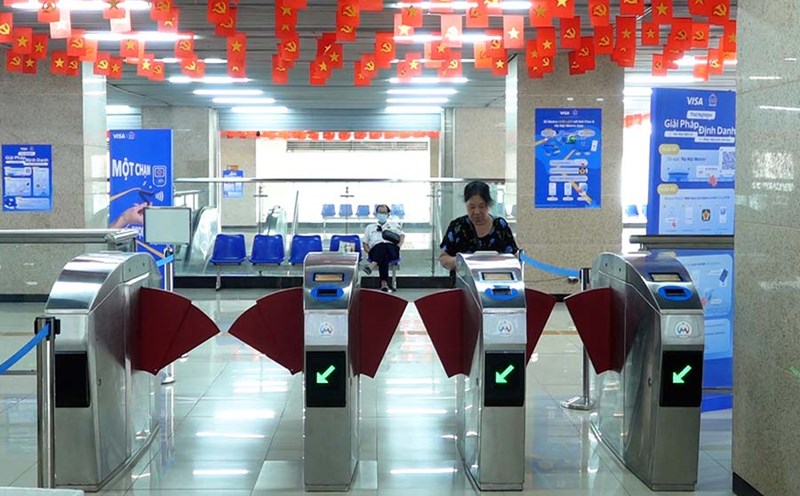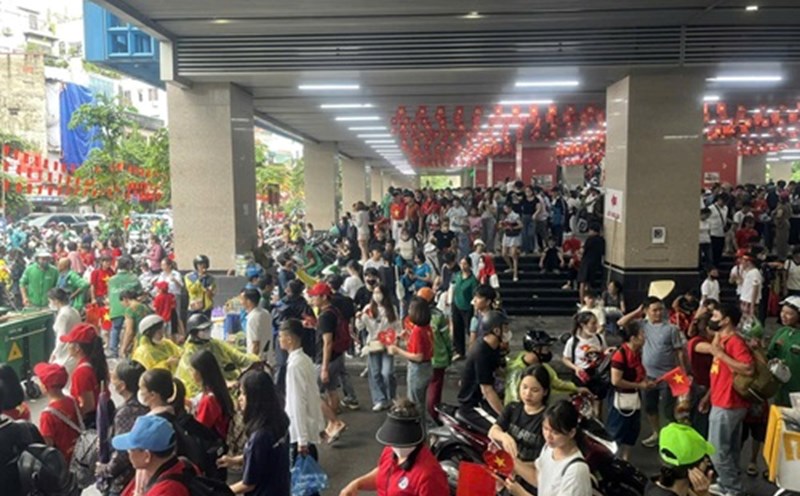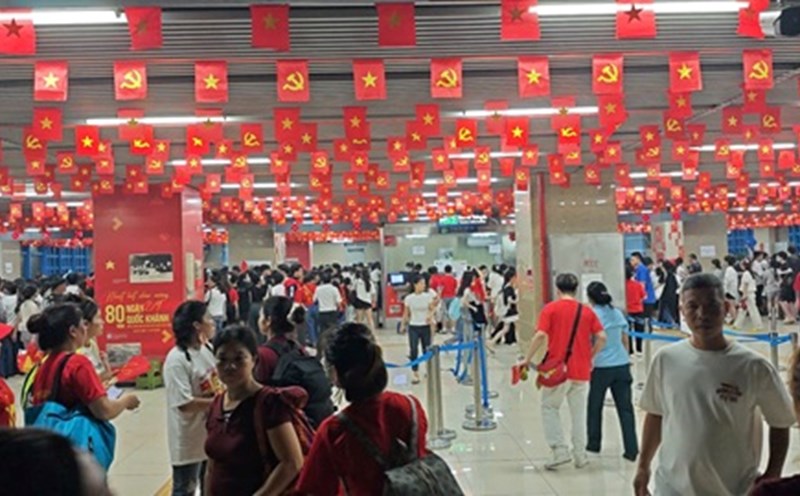pillars in the strategy of reducing traffic congestion
After nearly 15 years of implementation with many difficulties, Hanoi has now had two urban railway lines with a total length of 21.5km put into operation, including the 13km Cat Linh - Ha Dong route and the 8.5km elevated section of the Nhon - Hanoi Railway Station route.
Although only operating for a short time, the two routes have clearly demonstrated the superiority of large-volume public transport: Reducing traffic congestion, reducing environmental pollution and providing modern, safe and convenient transportation options for people.
The Nhon - Hanoi Railway Station (Nhon - Cau Giay section) currently serves an average of 19,000 - 21,000 passengers per day; while the Cat Linh - Ha Dong route reaches about 35,000 passengers/day. Both lines maintain an on-time train rate of over 99%, while passenger satisfaction exceeds 99.9%.
According to Mr. Khuat Viet Hung - Chairman of the Board of Members of Hanoi Metro Company Limited, the first two metro lines have created a strong "push", affirming high-quality public transport services and showing the positive reception of the people of the capital.
Deputy Head of Hanoi Urban Management Board (MRB) Nguyen Ba Son said that according to the overall plan, Hanoi will have 15 urban railway lines and sections with a total length of 616.9km. The task of investing and perfecting this network is "very heavy", but the City Party Committee, People's Council and People's Committee of Hanoi City all determined to be determined and closely direct each step.
To implement the plan, the Hanoi People's Committee has proposed many flexible mechanisms such as: Minimizing 50% of transport infrastructure investment capital for real estate projects; Using ODA loans combined with attracting private capital under the PPP (public-private partnership) form; Deploying the TOD model (urban development according to traffic orientation) to exploit land resources, reinvest in metro infrastructure.
These solutions are expected to create motivation and strongly attract capital for urban railway development.
Target of 100km metro before 2030
With the goal of completing about 100km of urban railway by 2030, Hanoi will have completed about 100km of urban railway. Of which, the Nam Thang Long - Tran Hung Dao route is 11.5km long (including 2.6km above ground, 8.9km underground), expected to start construction on October 9, 2025. The Van Cao - Hoa Lac route (No. 5) is about 39.6km long, expected to start construction on December 19, 2025.
Mr. Nguyen Hoang Hai - Vice Chairman of the Hanoi Public Passenger Transport Association - said that urban railways are the backbone of the public transport system, playing a key role in shaping transportation methods and reducing traffic pressure for the capital.
According to the traffic plan, by 2030, the market share of public passenger transport in the central area must reach 50 - 55%, after 2030 it will reach 65 - 70%.
According to Mr. Nguyen Cao Minh - Head of Hanoi Urban Development Management Board, this goal can only be achieved when the urban railway system is developed synchronously. It is expected that after completion, the Hanoi metro will be able to transport 3.2 million passengers/day, accounting for 35 - 40% of the public transport market share in the central area and about 20% in the suburbs.
Hanoi aims to develop urban areas according to the TOD model - building modern urban areas associated with metro lines.
The role of urban railways is extremely urgent: both solving congestion and reducing pollution, creating momentum for socio-economic development and improving the competitiveness of the capital, Mr. Minh emphasized.
Traffic experts say that, although the initial cost is huge, the effectiveness of real estate brings is even clearer and greater, including: Reducing economic losses (estimated at billions of USD per year) due to traffic congestion, increasing labor productivity due to shortening travel time and most importantly improving the investment environment, enhancing the position of international urban areas.
Investing more than 55 billion USD in real estate is a clever and strategic investment of Hanoi City. Therefore, to develop railways as a key task, it is necessary to mobilize maximum resources, in which: The State budget plays a leading role; Domestic resources are basic and long-term; External capital is important, creating breakthroughs. Hanoi will also review all public investment capital sources, including budget, bonds, ODA capital and other legal forms of mobilization to ensure the progress of urban railway projects in the coming time.











